Greensboro: A Cultural Herstory

Eight women who made a lasting mark on the city
By Cassie Bustamante
In honor of Women’s History Month, we’re paying homage to the fierce females who were pioneers in Greensboro’s arts and culture scene. Some you may know; others you may not.
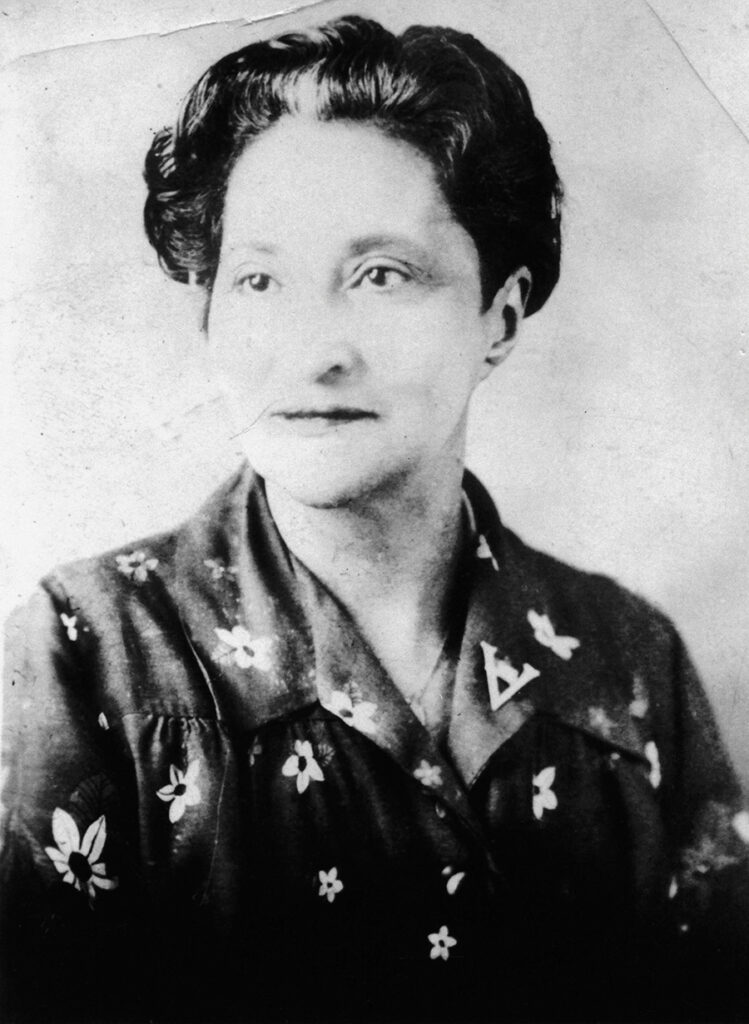
Photograph © Greensboro History Museum Collection
MARTHA SEBASTIAN
Beginning in the late 1800s, Scottish immigrant Andrew Carnegie made his fortune in iron, oil and steel, and then invested it in one of the most valuable commodities: public knowledge. At a time when segregation laws were still in place, Carnegie funded 2,500 libraries, including 12 free-to-use libraries, dubbed “Carnegie Negro libraries,” for underserved Blacks. In 1924, Greensboro’s Bennett College became the site of the last one built, and Martha Sebastian, a library science graduate of Simmons College in Boston, became head librarian, a role she maintained until her death in 1948. By 1930, Sebastian had built the largest collection of any public segregated library in the state. Sebastian also amassed an African American literature collection and created a meeting space for Black organizations. Knowledge is power, and, under her leadership, the library empowered those it served. Today the former library houses offices for Bennett College. Nearby, a meeting room at the Vance H. Chavis Branch Library is dedicated to Sebastian.
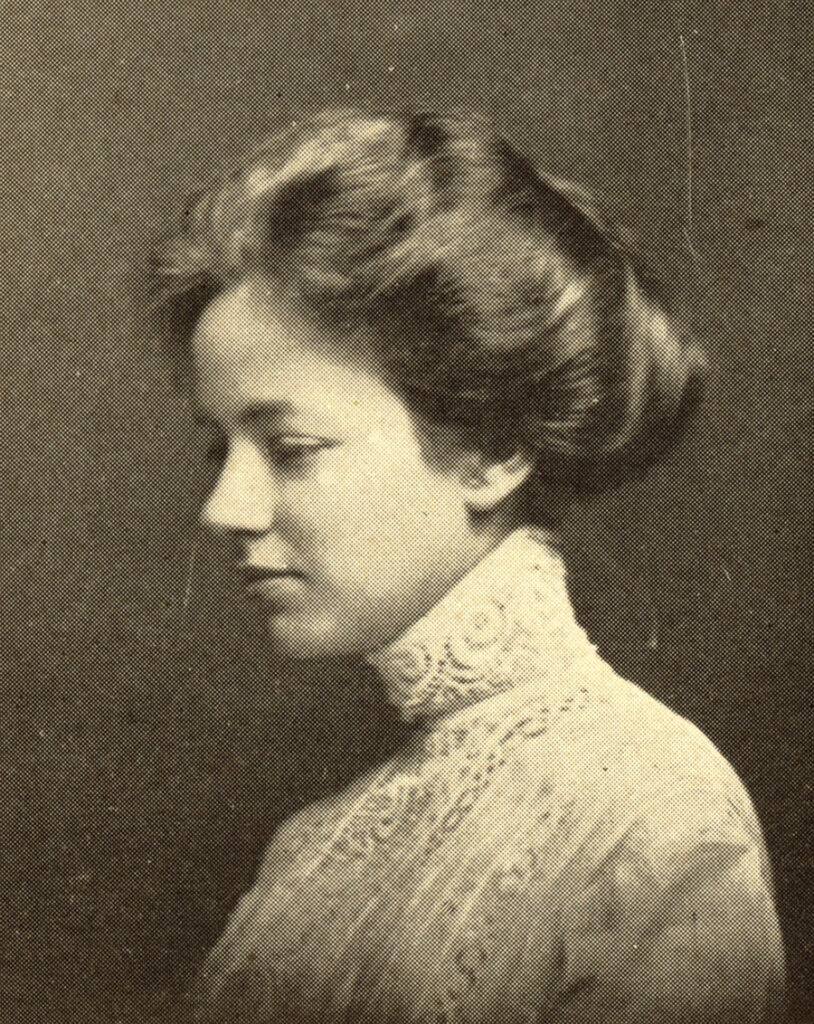
Photograph Courtesy of the Martha Blakeney Hodges Special Collections and University Archives, The University of North Carolina at Greensboro
Portrait of Laura Weill Cone, 1910 The Carolinian
LAURA WEILL CONE
Hands down, Cone is one of the most recognized surnames in Greensboro history. Brothers Moses and Ceasar established their business, Cone Export and Commission Company, in 1891, which led to a textile empire that culminated in today’s denim innovator, Cone Denim. The name can be seen on schools, street signs and any number of medical facilities throughout the city. But it was the Cone women who would have a profound impact on the city’s art scene. Thanks to the family’s lucrative business, sisters Claribel and Etta were afforded the luxury of global travel and collecting art. In Paris, they rubbed elbows with the likes of Picasso and Matisse, and began collecting Modern art. Their sister-in-law, Laura Weill Cone, married to brother Julius, was a loyal Woman’s College (now UNCG) grad who worried that the school’s Weatherspoon Art Gallery was struggling. She asked Etta to consider a donation. Upon Etta’s death in 1949, a large collection was left to Woman’s College. So next time you admire Picasso’s The Coiffure while perusing the free-admittance gallery, think of Laura and the Cone sisters. Without them, the graceful ink sketch of a Parisian beauty admiring her hairdo in a mirror would doubtless be hanging somewhere other than Greensboro.
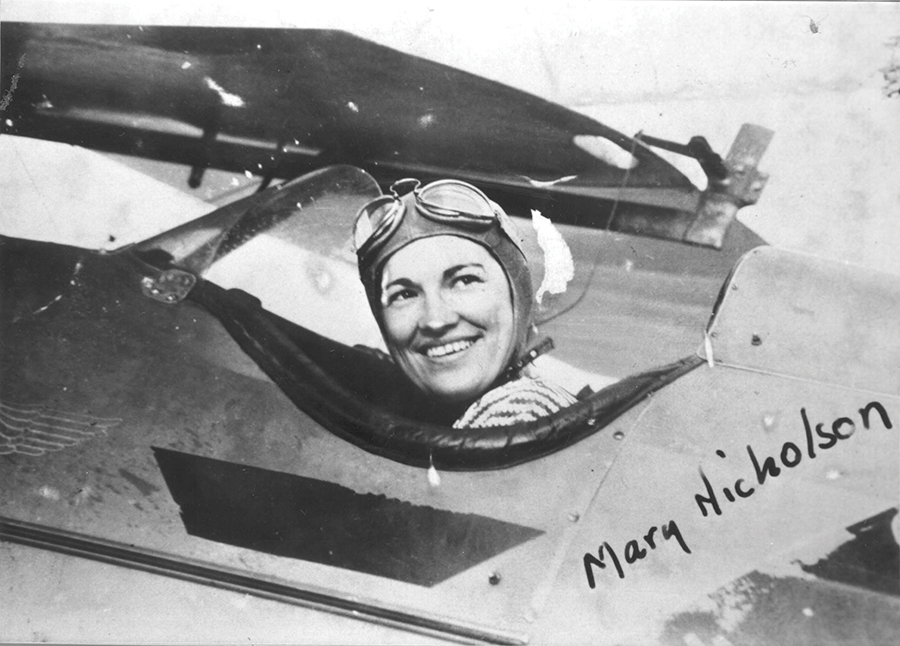
Photograph © Greensboro History Museum Collection
By piloting students into a career in flying, Mary Nicholson gave wings to the dreams of others.
MARY NICHOLSON
Anybody who’s seen an N.C. license plate knows we’re “First in Flight,” but you may not know that the first female in the state to earn both a commercial pilot’s and transport license was Spartan Mary Nicholson. Born in Greensboro in 1905, Nicholson attended North Carolina College for Women (now UNCG) to study music, but, after taking her first flight in 1927, decided the only high notes worth hitting were in the friendly skies. How did she get aloft? Easy. She parachuted out of a plane as an ad for a flying school. In 1929, she became a charter member of The Ninety-Nines: International Organization of Women Pilots — founded by Amelia Earhart, Fay Gillis Wells and Ila Loetscher, and still around almost 100 years later. She was one of 25 civilian women on the British Air Transport Auxiliary unit during World War II. On May 22, 1943, Nicholson died doing what she loved after her engine froze up, demolishing her propeller mid-flight. Despite her best efforts, she crashed into a stone barn in Worcestershire County, England. Next time you’re preparing for takeoff at PTI and see a female in the cockpit, you can thank Mary Nicholson for paving the runway for others.
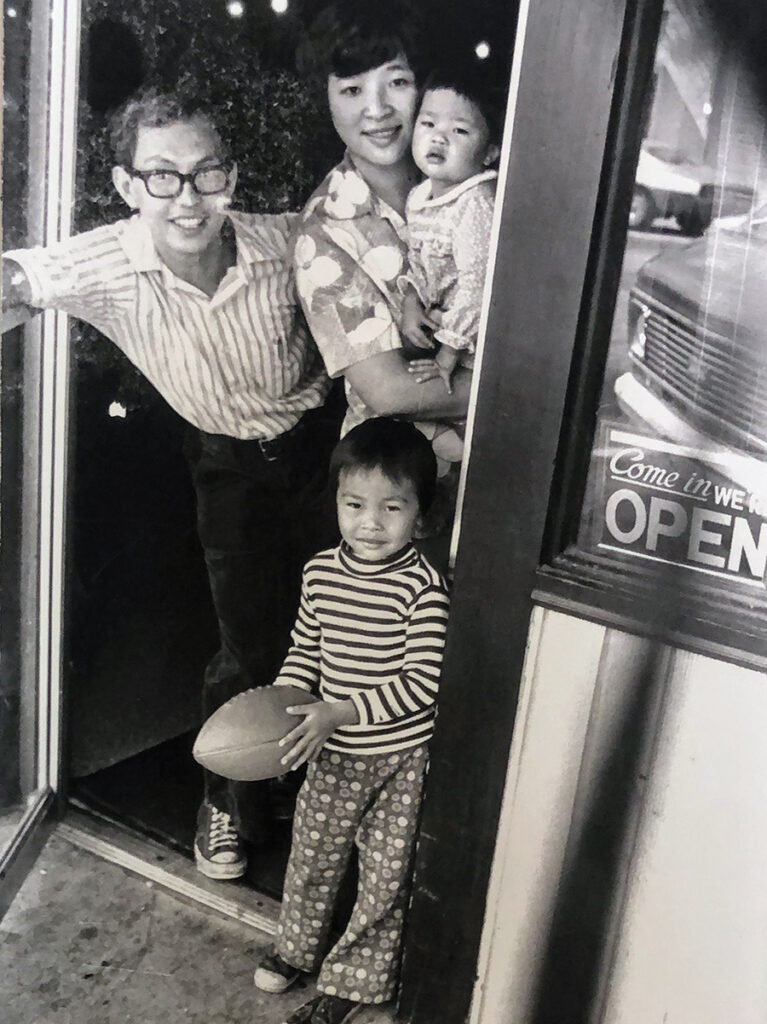
Photograph Courtesy of the Leung Family
Whether as unofficial “mayor” or “mother” of Tate Street, Amelia Leung fed and nurtured her community.
AMELIA LEUNG
In 1969, Amelia Leung, a trained nurse who was working at the Lotus restaurant in downtown Greensboro, and her husband Robert, a recent N.C. A&T grad with a degree in electrical engineering, were cruising along Tate Street when they noticed a restaurant, the Apple Cellar, for sale. According to Leung in a November 2016 O.Henry story, the owners weren’t jiving with the rising hippie scene. A couple years later, Hong Kong House opened and dished out more than cuisine; it created its own culture. Amelia blended her Chinese family recipes with customer and staff suggestions, a fusion ahead of its time. But more than the diners, the local musicians were nourished by Amelia and remember her as the “mother of Tate Street.” She offered free meals to starving artists in exchange for playing at her restaurant. Creating a neighborhood atmosphere that welcomed everyone, she helped organize the very first Tate Street Festival in 1973. While the restaurant closed in 1999 and Amelia died in 2021 at the age of 77, the festival returned to Tate Street last fall after a three-year hiatus, once again bringing music, food and people together.
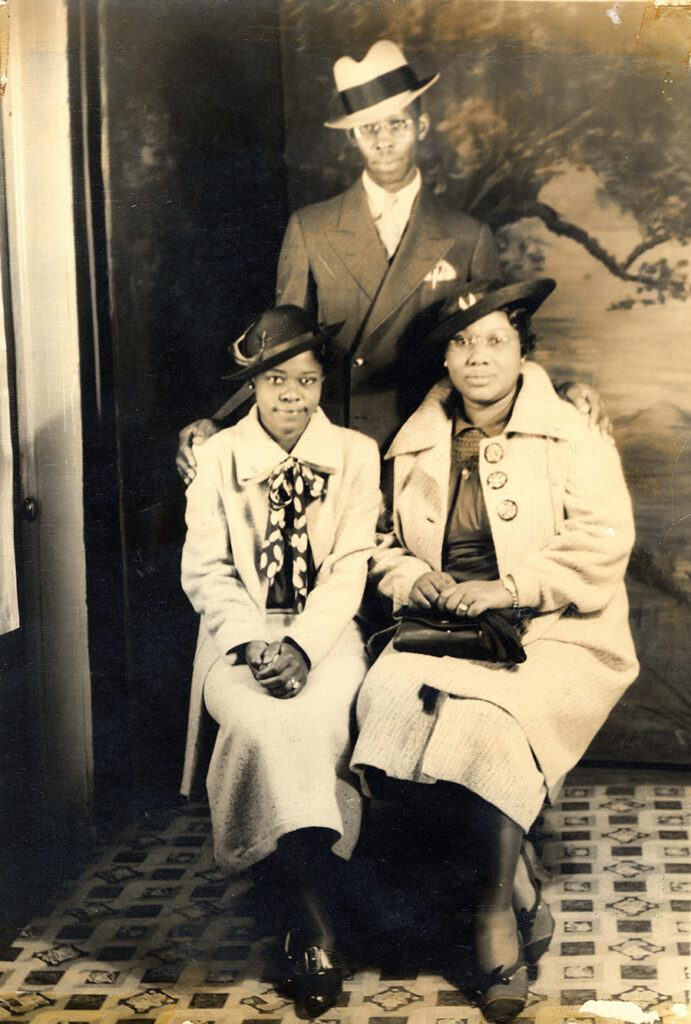
Photograph © Greensboro History Museum Collection
Family portrait of Edward London, Sadie Mack London, and daughter Evelyn
SADIE MACK LONDON
Sadie Mack, born in South Carolina in 1898, was drawn to the business of beauty from a young age and moved to New York City to pursue her passion. There, she learned cosmetology as well as product manufacturing at Poro Beauty College. Post graduation, she became licensed in the Empire State. But when her brother fell ill, Mack moved to Greensboro to care for him. No powder-puff entrepreneur, she opened her own Gate City beauty shop and married a widowed tailor named Edward D. London. Together they created a joint Black-owned establishment featuring his tailoring and dry-cleaning services, as well as her salon, where she began teaching cosmetology. In 1935, Edward left his tailoring business and the couple opened Maco Beauty College at 505 E. Market St. Quickly outgrowing the space, MBC relocated to a former hotel, which allowed for dormitories as well as other amenities. Sadie died in 1942, but, under Edward’s direction, the school flourished and, during its 34 years in business, trained over 1,000 cosmetologists. Maybe she was born with it, but it certainly didn’t die with her.
MARGARET FALKENER
In December 2023, North Carolina A&T State University won ESPN’s inaugural award for HBCU Band of the Year in Division I. Bang the drum for Band Director Kenneth Ruff, but let’s remember Margaret Mitchell Falkener, who founded the music department in 1894. She opened doors for the Blue and Gold Machine to march right through. Born in 1870 in Oberlin, Ohio, Falkener, a talented pianist, came to the Tar Heel State to teach. After settling with her husband in Greensboro, not only did she found the Aggies’ music department, but she also volunteered for more than 800 hours in 1918 alone, providing home service to Black families affected by World War I, and served as the first female supervisor of Guilford County Black schools. Founder of the county’s first Black garden club, an organizing member of Unified Institutional Baptist Church and the mother of five sons, one of whom would become a city councilman, Falkener died in 1938, but her beat goes on.
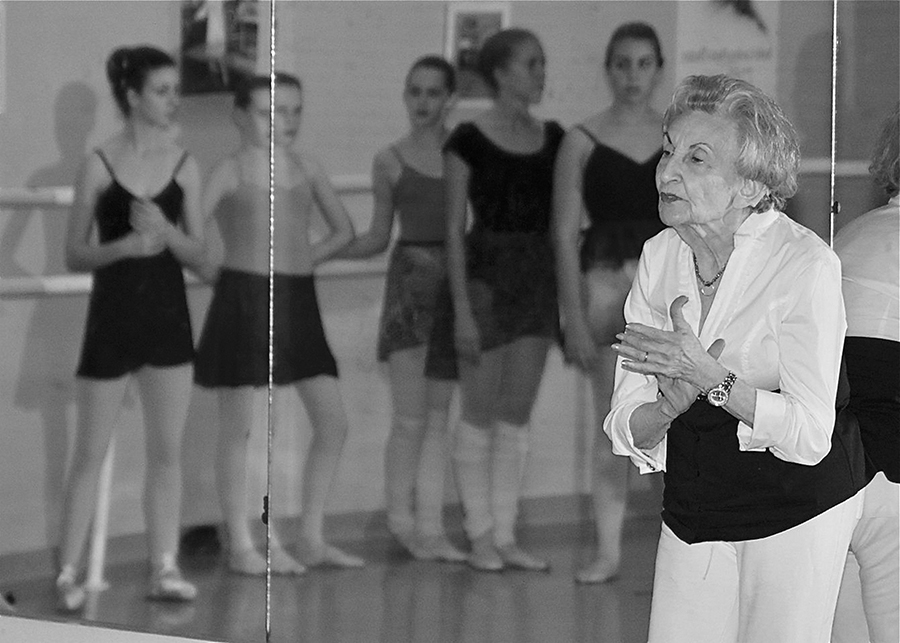
Photograph by Sam Froelich
Elissa Minet Fuchs instructing a class
ELISSA FUCHS
By the time Elissa Minet Fuchs came to Greensboro in 1976, she’d already had quite an impressive career as a ballerina, radio actress and choreographer. Born in New Orleans, Louisiana, in 1919 to a Jewish American family, Fuchs left at the age of 16 to pursue a professional dance career in Chicago, where she’d heard opportunity awaited. A grand jeté of faith? Perhaps, but from there she pirouetted into professional dancing and teaching for years to come, including work on Broadway, with Ballet Russe, a 12-year stint as a soloist and corps de ballet member at the Metropolitan Opera in New York City, and the founding of the Baton Rouge Ballet Theatre. When her husband, Dr. Peter Paul Fuchs, took on the role of Greensboro Symphony and Opera conductor, Fuchs began serving on the board at the Greensboro Ballet, where she would later choreograph and teach — well into her 90s! In 1981, Fuchs and director Maryhelen Mayfield decided to bring The Nutcracker to the Gate City. It remains a long-standing tradition today. Fuchs died in February 2023 at the age of 103. On her obituary page, one word reappears in the comments left by those who remember her: legend.
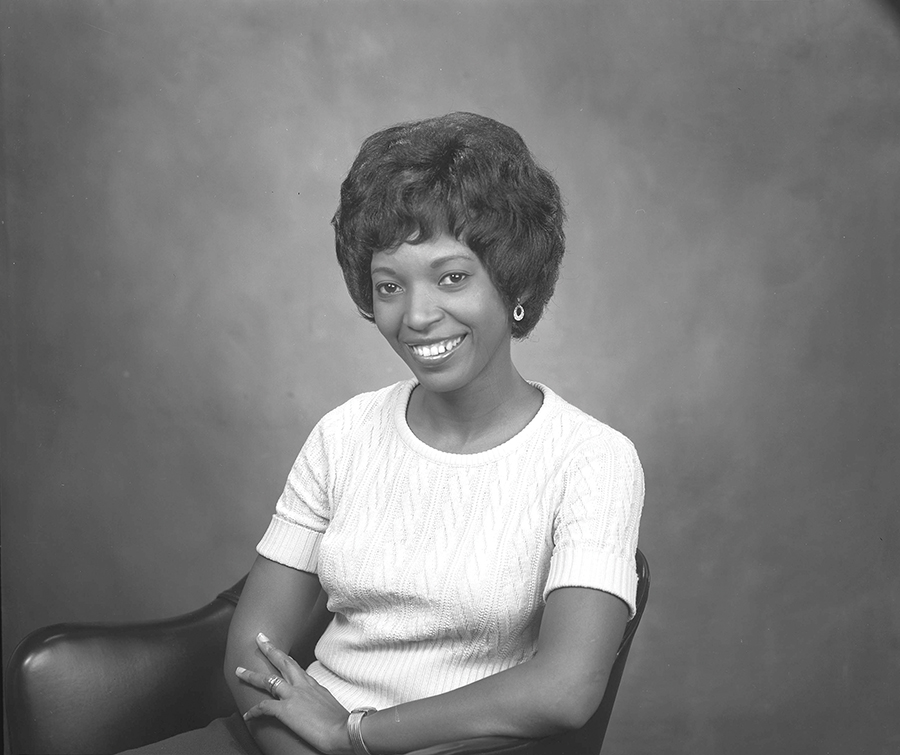
Photograph © Carol W. Martin/Greensboro History Museum Collection
SANDRA HUGHES
If you tuned into WFMY News 2 from 1972–2011, chances are you found the face of Sandra Hughes — a proud Aggie alum-turned-professor — smiling back at you. In 1974, shortly after launching her career in journalism, Hughes became the first Black woman to host her own daily talk show in the Piedmont, Sandra and Friends, which ran for four years. In a 2019 WFMY News story, Hughes recalled receiving bomb threats at the station because of her show, saying “People didn’t think that the time had come for a Black woman to be doing a show by herself on television.” Not only did she prove them wrong, but she became one of the most recognizable names in Triad journalism. As Greensboro History Museum curator of community history Glenn Perkins notes, we can thank her for “opening the door to a generation of journalists.” OH
